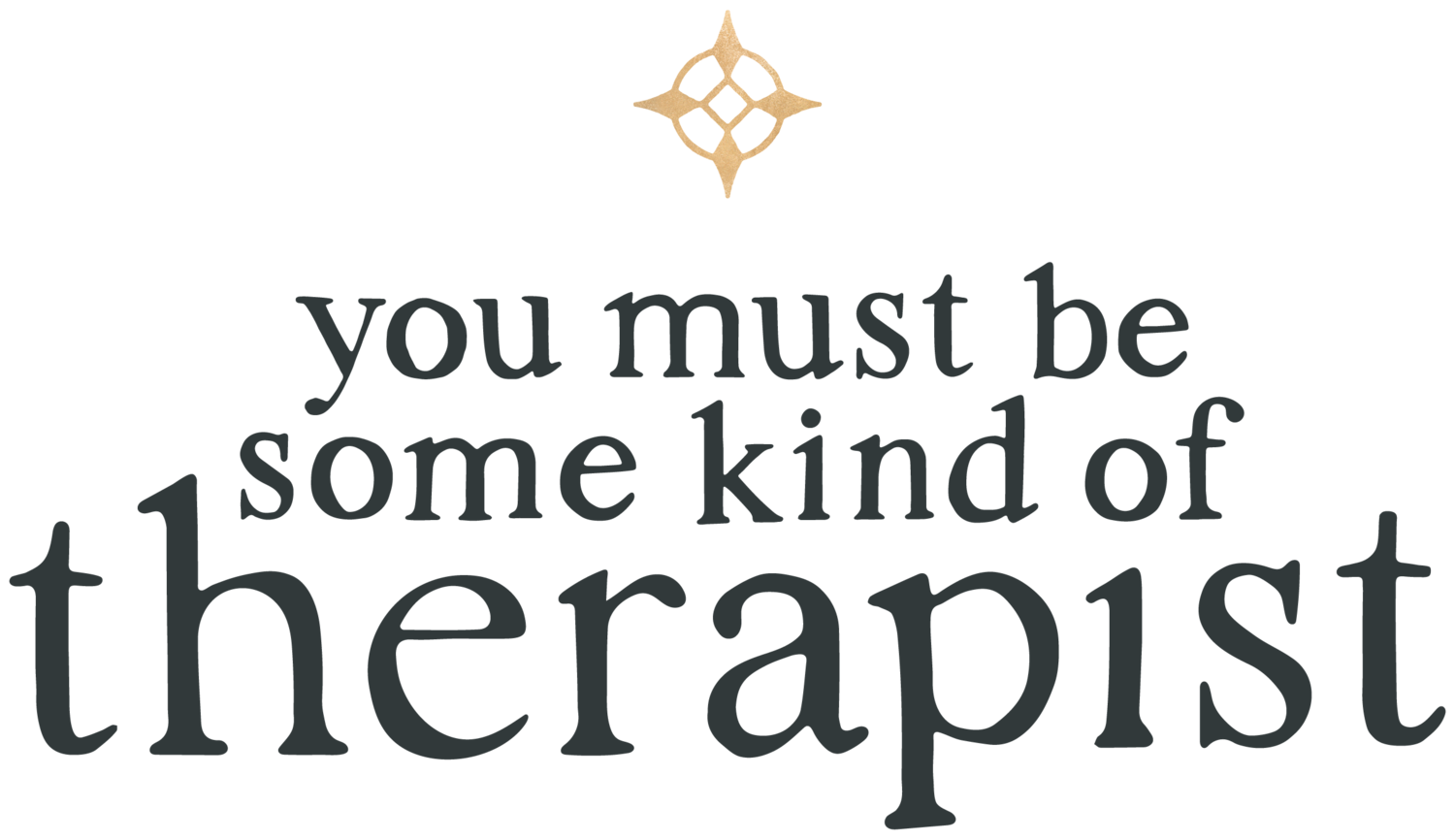Can Therapy Cure Gender Dysphoria?
A friend recently reached out to me with this question:
“How common is therapy as a successful cure for [gender] dysphoria? I was under the impression that some people have neurological development issues at the core of their dysphoria, and I'm guessing for those people, dysphoria is incurable.”
My answer to the first question of How common is therapy as a successful cure for [gender] dysphoria?:
For children adolescents with gender dysphoria, a thoughtful approach to therapy can aid in the natural process of becoming comfortable in one’s body and birth sex. Approaches that do not rush gender dysphoric youth into medicalization can be called “watchful waiting,” or “gender exploratory therapy.” I prefer to simply think of them as good therapy, performed in a manner not dissimilar to how a skilled clinician would approach any other issue. We take time to establish rapport with our clients, explore and map a myriad of factors related to the presenting problem. We help our clients to identify any social, cultural, interpersonal or familial stressors or traumas that might be contributing to the individual’s distress. We assess any psychiatric comorbidities. We understand our clients’ narratives, worldviews, and cognitive structures. We conceptualize gender issues in adolescents within a framework informed by developmental psychology and familiarity with current social trends. We can then help our clients get to the root of the problem and find the most effective, least invasive approach that will help resolve their distress.
According to statsforgender.org,
One study showed that, without social transition, nearly two-thirds of pre-teen gender-dysphoric males grow up to be gay or bisexual.
A University of Toronto study [1] found that 63.6% of boys with early onset gender dysphoria, who received ‘watchful waiting’ treatment and no pre-pubertal social transition, grew up to be gay or bisexual.
Only 12% of the study participants continued to identify as transfeminine.
REFERENCES
[1] Singh, D., Bradley, S.J. & Zucker, K.J. (2021). A Follow-Up Study of Boys With Gender Identity Disorder. Frontiers in Psychology 12. [Link]
And,
Gender-related distress will alleviate for around 80% of pre-teen children once they become teenagers.
Evidence from 10 available prospective follow-up studies [1] from childhood to adolescence indicates that childhood gender dysphoria will recede with puberty in ~80% of cases. A Dutch paper [2] notes that follow-up studies show the persistence rate of gender identity disorder to be about 15.8%, or 39 out of the 246 children who were reported on in the literature.
In one study [3] of 54 children referred to a clinic in childhood because of gender dysphoria and then later investigated by a follow-up study, only 21 (39%) still had gender dysphoria.
A different study [4] of Canadian boys with gender identity disorder showed that 87.8% desisted, with only 12.2% — fewer than 1 in 8 — persisting in their transgender identity.
An ~80% desistance is not universally found [5]. Thorough investigations of the claims and counter-claims appear in two 2018 studies [6, 7].
REFERENCES
[1] Kaltiala-Heino, R., Bergman, H., Työläjärvi, M., & Frisén, L. (2018). Gender dysphoria in adolescence: current perspectives. Adolescent health, medicine and therapeutics 9, 31–41. [Link]
[2] Steensma, T.D. & Cohen-Kettenis, P.T. (2011). Gender Transitioning before Puberty? Archives of Sexual Behavior 40 (4): 649-50. [Link]
[3] Wallien, M.S. & Cohen-Kettenis P.T. (2008) Psychosexual outcome of gender-dysphoric children. J Am Acad Child Adolesc Psychiatry 47 (12): 1413-23. [Link]
[4] Singh, D., Bradley, S.J. & Zucker, K.J. (2021). A Follow-Up Study of Boys With Gender Identity Disorder. Frontiers in Psychology 12. [Link]
[5] Temple Newhook, J., Pyne, J., Winters, K., Feder, S., Holmes, C., Tosh, J., Sinnott, M., Jamieson, A., & Picket, S. (2018). A critical commentary on follow-up studies and “desistance” theories about transgender and gender non-conforming children. International Journal of Transgenderism 19 (2). [Link]
[6] Steensma, T.D. & Cohen-Kettenis, P.T. (2018). A critical commentary on “A critical commentary on follow-up studies and “desistence” theories about transgender and gender non-conforming children”. International Journal of Transgenderism. [Link]
[7] Zucker, K. J. (2018). The myth of persistence. International Journal of Transgenderism 19 (2): 231-45. [Link]
Adolescence is awkward for everyone. Puberty is often accompanied by feelings of embarrassment and discomfort in one’s developing body. Gender dysphoria may simply be an exaggeration or specific manifestation of this normal developmental process. Good therapy and simply the natural progression of time will often alleviate this distress.
The second part of the friend’s question states, I was under the impression that some people have neurological development issues at the core of their dysphoria, and I'm guessing for those people, dysphoria is incurable. In response:
This article summarizes and interprets myriad original sources regarding the links between gender dysphoria and the brain. What I take from it that’s relevant here is that people with gender dysphoria have less neuronal activities in brain regions associated with the mind-body connection, eg. proprioception. This is hardly surprising given that young people today spend a huge amount of time online and are less embodied than ever. There is no reason to believe that the mind-body connection cannot be strengthened by physical activities that engage the body and senses, ranging from physical hobbies (gardening, woodworking) to exercise, and especially exercise that involves a mindfulness component (eg. yoga). This is all the more true while the brain is still developing prior to the age of 25, although neuroplasticity remains available to people of all ages.
Unlike physical activity and lifestyle interventions, taking cross-sex hormones contributes to the further weakening of these brain regions, and increases the risk of conditions such as Alzheimers and schizophrenia.
We should also consider how trauma, such as childhood sexual abuse, can create dissociative symptoms. The appropriate treatment in that case is good trauma therapy that helps the individual feel safe in their own body, and feel that it belongs to them.
Comorbities can also be identified and treated. Nowadays all kinds of distress gets funneled into the category of gender, and medicalization is presented as a cure-all. However, taking the focus off of gender and instead treating underlying depression, anxiety, ADHD, PTSD and other conditions can help alleviate gender complaints.
We also know that rates of ROGD are higher in children with autism. This makes sense for a number of reasons. Many autistic people have never conformed to traditional gender stereotypes and feel uncomfortable with the expectation to “perform” such roles. The autistic brain feels comforted by categories, and can easily succumb to the sort of rigid, black and white thinking we see in gender ideology. In this case it would not necessarily be accurate to say that there is a neurological component to the dysphoria itself, but that there is a neurological component to the underlying condition that renders a person susceptible to a certain conceptualization of gender.
Finally, I would suggest that anyone interested in the efficacy of gender exploratory therapy in treatment of gender dysphoria check out the prolific work of Sasha Ayad, LPC. She is an excellent therapist who has successfully helped hundreds if not thousands of young adults alleviate gender related distress through psychotherapy.
This is far from a complete answer but I wanted to share my thoughts on the matter sooner rather than later. I hope this helps.


